Quantum computing for covalent inhibitors in drug discovery
Quantum simulations for developing Quantum-Enhanced Density Functional Theory (QE-DFT) to accelerate covalent inhibitor drug discovery, specifically targeting Myotonic Dystrophy type 1 (DM1).
OWNER

QUANTUM APPROACH
Quantum Simulation
SDGs
CONTRIBUTORS
University of Nottingham
Phasecraft
QuEra Computing Inc.
ORIGIN OF CONTRIBUTORS

HOW COULD QUANTUM HELP:
Myotonic dystrophy is a genetic condition that causes progressive muscle weakness and wasting. It is the most frequent form of muscular dystrophy in adults worldwide, with an estimated 6,500 people affected in the UK. Quantum-enhanced atomistic modeling can be integrated into multiscale quantum chemical simulations, using quantum circuits tailored to neutral atom quantum computers. Research has demonstrated quantum-enhanced density functional theory simulations, alongside quantum emulation, that built the largest known database of molecular classical data, quantum Hamiltonians, and circuits, with many ground state properties computed through emulation. These results and resources enable the training of transferable models, establishing a scalable path toward large-scale, quantum-enhanced simulations of full drug molecules interacting with proteins. More accurate simulations of these interactions and their biochemical processes could hope to enhance treatments for the genetic conditions myotonic dystrophy.




